In case of unstable engine operation, poor starting, high oil consumption in the engine, it is necessary to check the compression in the engine cylinders
Cylinder compression is the highest gas pressure in the cylinders when the piston compresses the air at the end of the compression stroke.
Low or no compression pressure indicates piston ring wear, piston or valve burnout.
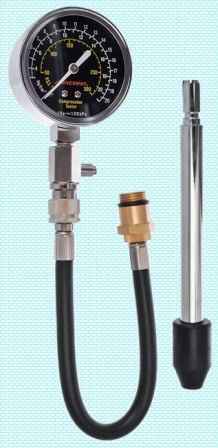
The compression in the engine cylinders is checked with a compression gauge, which is inserted into the spark plug hole in the cylinder head.
The tip of the compression gauge is rubber, it should be pressed tightly into the spark plug hole when measuring compression.
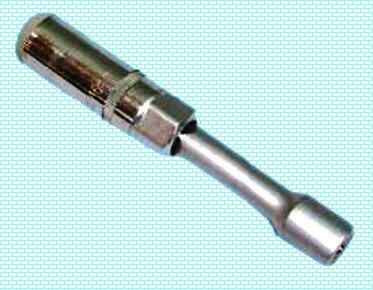
To unscrew the spark plugs, we use a special spark plug wrench for 16.
Before checking the compression, you need to start the engine and warm it up to operating temperature.
After that, turn off the fuel pump and release the fuel pressure.
Fuel pressure relief is described in the article - "Replacing the optional Renault Duster fuel filter"

We remove the engine ignition coils and unscrew the spark plugs with a candle wrench.
Replacing spark plugs, you can see the article - "Replacing coils and spark plugs Renault Duster".

We install the compression gauge in the spark plug hole of the cylinder to be checked.
The assistant presses the gas pedal (throttle actuator) all the way to fully open the throttle.
Turn on the starter and turn the engine crankshaft until the pressure in the cylinder stops increasing. This corresponds to approximately four compression cycles.
To obtain correct compression gauge readings, the crankshaft must be rotated at a speed of 180-200 min -1 or higher, but no more than 350 min -1.
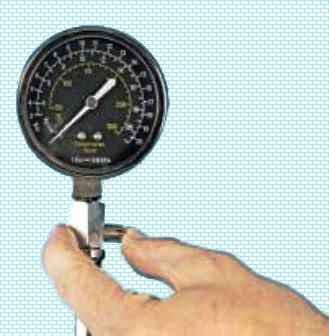
We record the readings of the compression gauge, and release the pressure of the compression gauge by pressing the air release valve.
Checking the pressure in other cylinders.
Normal pressure in the cylinders should not be lower than 1.28 MPa and should not differ in different cylinders by more than 0.1 MPa.
The minimum allowable compression is 1.135 MPa

To find out the cause of insufficient compression, you can pour 20 ml of clean engine oil through the spark plug hole and measure the compression again.
If the compression gauge readings have increased, it means that there is a lot of wear or breakage of the piston rings.
If the compression values bremained unchanged, then this indicates a loose fit of the valve plates to their seats or damage to the cylinder head gasket.
The cause of insufficient compression can also be found by supplying compressed air to the cylinder in which the piston is pre-set at TDC on the compression stroke.
To do this, remove the tip from the compression tester and attach the compressor hose to it.
Insert the tip into the spark plug hole and blow air into the cylinder at a pressure of 2-3 kgf/cm2.
For what If the crankshaft of the engine does not turn, shift into a higher gear and brake the car with the parking brake.
The exit (leakage) of air through the throttle assembly indicates a leak in the intake valve, and through the muffler - a leak in the exhaust valve.
If the cylinder head gasket is damaged, air will escape through the neck of the expansion tank in the form of bubbles or into the adjacent cylinder, which is detected by a characteristic hissing sound.
Measurement of fuel pressure in the engine supply system
An indicator of the health of the engine power system is the fuel pressure in the fuel rail.
In case of insufficient fuel pressure, the following are possible:
- – unstable engine operation;
- – stop the engine at idle;
- - reduced idle speed of the crankshaft;
- - insufficient throttle response of the car (the engine does not develop full power);
- - dips in the engine when the car is moving.

First, we recommend checking the reliability of the electrical contacts in the ECM wiring harness blocks responsible for fuel supply (fuel pump module, injectors, fuel relay and appropriate fuses).
The fuel pressure in the fuel system is checked using a professional pressure gauge and a hose with an original fitting for connecting to a valve located on the fuel rail.
Turn on the ignition and listen: within a few seconds you should hear the sound of the electric fuel pump.
If you can't hear it, check the power supply circuit of the electric fuel pump.
If you turned on the ignition three times without trying to start the engine, the electric fuel pump will not turn on again, which is not a sign of a malfunction.
It will turn on at the same time as the starter starts the engine.
Relieve pressure in the fuel system (see "Replacing the Renault Duster additional fuel filter).
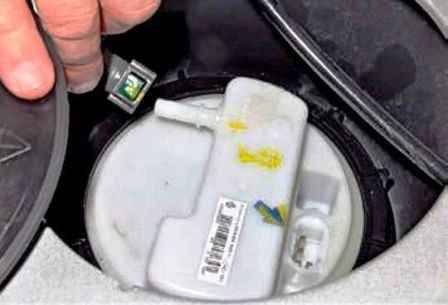
Disconnect the pressure pipe from the fuel pump (article - Repair of the Renault Duster fuel module)
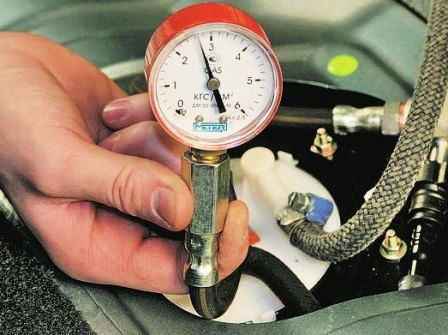
To check the fuel pressure, we connect a pressure gauge (with a measurement limit of at least 5 kgf / cm 2) between the fuel pump and the pressure pipe
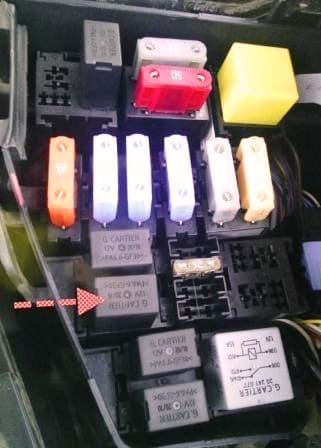
We install the relay in the mounting block, which was removed when the pressure in the power system was reduced
Starting the engine.
When the engine is running at idle, the pressure in the fuel line must be at least 3 kgf / cm 2.
The following reasons for pressure drop are possible:
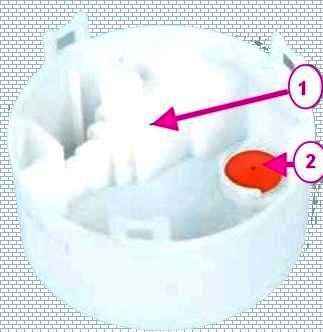
- malfunction of the fuel pressure regulator;
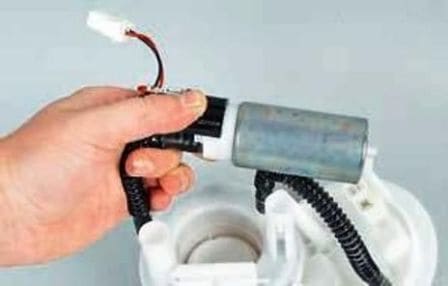
- fuel pump malfunction;

- contamination of the fuel fine filter;

- clogged strainer in the fuel pump module.
Stop the engine and release the fuel pressure.
Disconnect the pressure gauge from the power system.





